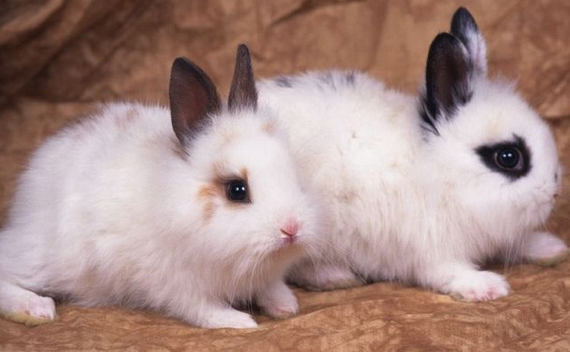In summer, high temperature and rain, high temperature, high humidity and other environmental factors are likely to cause diarrhea in rabbits. In general, there are three main reasons for diarrhea in rabbits in summer. One is feeding moldy and degraded feed, the other is caused by drinking water pollution, and the third is caused by coccidiosis infection. However, the frequent and frequent diarrhea in rabbits in summer is mainly caused by coccidia infection.
Rabbit diarrhea caused by coccidia mainly occurs in April-September, in which the period from July to August is high, and many rabbits are infected for 2 to 3 months. At present, the high incidence of rabbit coccidiosis in our province is mainly intestine. Intestinal coccidiosis mainly caused by infection and liver coccidiosis mainly caused by liver infection.
The clinical manifestations of hepatic coccidiosis and intestinal coccidiosis are similar. The early stage of the rabbit manifests as loss of appetite, depression, slow movement, increased secretion of eyes, nasal secretions and saliva, moist hair around the mouth, diarrhea and constipation. Alternate, late manifestations of intestinal swelling, abdominal swelling, diarrhea, brown stool, a strong smell of sputum, severely contaminated by feces around the anus, young rabbits showed thinness and weakness, pale conjunctiva, late neurological symptoms, head to Backward, limbs convulsions, screams, and finally died of death, the onset of hepatic coccidiosis rabbits palpated the liver area with pain response.

The symptoms of intestinal coccidiosis are characterized by a large number of white nodules on the intestinal mucosa (the cecum is more obvious), the stomach is enlarged, the gastric mucosa is inflamed, and it is filled with a large amount of liquid and gas; duodenum, jejunum, and ileum The intestinal wall and mesenteric vessels of the cecum are dendritic and congested, the intestinal lumen is inflated, the intestinal mucosa is red and swollen, and the bleeding point is covered. The intestine cavity is filled with thin feces mixed with mucus; the bladder is severely urinary; some of the dead rabbit mesenteric lymph nodes are swollen.
The symptoms of hepatic coccidiosis are characterized by white nodules on the liver, which are mainly characterized by rounded liver surface. There are many scattered yellow-white rice-sized lesion nodules along the bile duct in the liver surface and parenchyma. In the liver tissue, the nodules were cut and the contents were white paste.
Adding anti-coccidial drugs to the feed can prevent diarrhea caused by coccidiosis in summer rabbits, such as chlorpheniramine, diclazuril, chlorpyrifos, coccidia, and gram-ball. 10 days or so. In addition, because coccidia are highly resistant to drug resistance, anticoccidial drugs should be used interchangeably in the same rabbit farm, usually for 2 to 3 months, and 2 to 3 different anticoccidial drugs. Alternate use.
After coccidiosis in rabbits, the feces contaminated by coccidia should be accumulated and fermented to kill coccidia in time. It should not be used directly as farmyard manure to avoid coccidiosis. The rabbit cage with coccidiosis should be disinfected with flame immediately. cross-infection. Rabbits diagnosed with coccidiosis can be treated with sulfa drugs twice a day.
Vitamins are a kind of trace organic substances that humans and animals must obtain from food in order to maintain normal physiological functions. They play an important role in the growth, metabolism, and development of the human body. In the body, this kind of substance can neither be a raw material for body tissue nor a source of energy, but a kind of regulating substance, which plays an important role in material metabolism.
From the point of view of chemical structure, various vitamins are very different or even unrelated. Therefore, vitamins are usually classified according to their physical properties. They can be divided into fat-soluble vitamins (such as vitamin A, D, E, K, etc.) and water-soluble vitamins ( Such as vitamin C, vitamin B1, B2, B6, B12, pantothenic acid, PP, biotin, folic acid, choline, etc.). Water-soluble vitamins are easily soluble in water but not soluble in organic solvents. They are stored in the body after absorption. Excessive amounts are mostly eliminated in the urine; fat-soluble vitamins are easily soluble in organic solvents but not in water. They can be absorbed by the body with fat and stored in the body, and the excretion rate is not high.
From the perspective of obtaining methods, vitamins can be divided into natural products and chemical synthetic products. Because natural vitamins are limited by raw materials and extraction technology, their yields are low, and their prices are high. Therefore, chemical synthesis takes the lead, accounting for about 80% of the total vitamin output. Among the various segments of the vitamin industry, vitamin B, vitamin E, vitamin C and vitamin A have the largest market shares, 33%, 30%, 21% and 13% respectively. Other vitamins have a smaller market share, accounting for only 3%.
Vitamin C,vitamin b3,vitamin raw material
Xi'an Natural Field Bio-Technique Co., Ltd. , https://www.natural-field.com